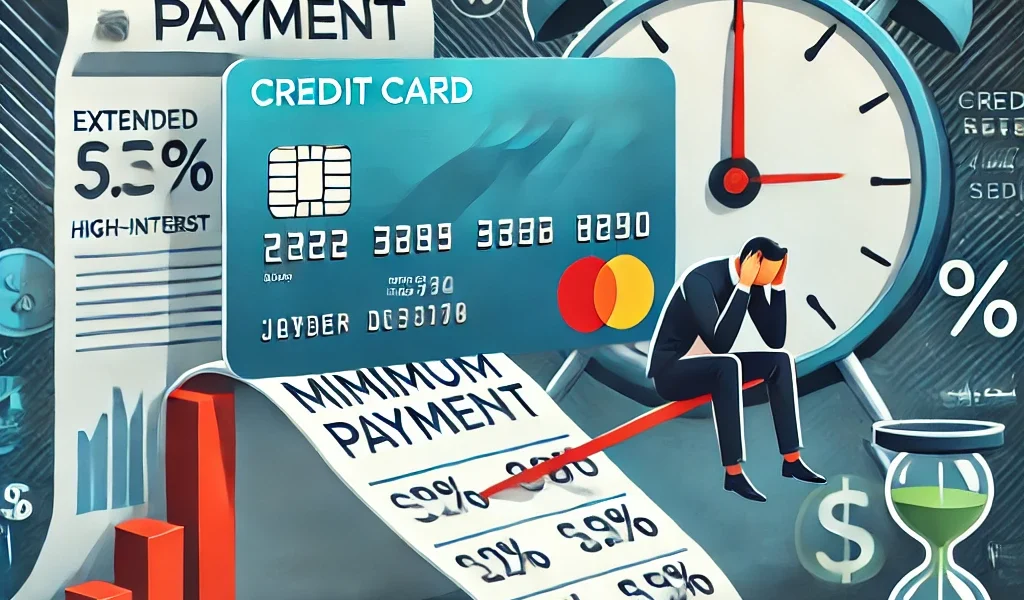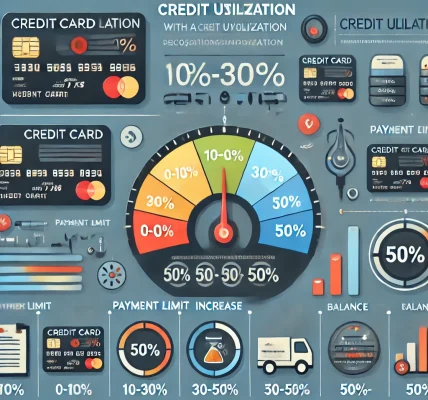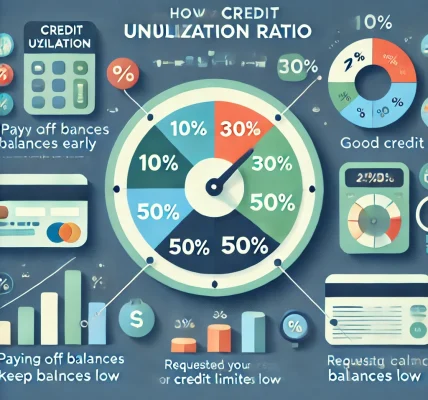Credit cards offer convenience and financial flexibility, but they can also become a financial burden if not managed correctly. One of the biggest traps that many credit card users fall into is making only the minimum payment each month. While it may seem like an easy way to stay on top of your bills, making only minimum payments can lead to a cycle of debt that is difficult to escape.
In this DIY guide, we will explore how minimum credit card payments work, why they can be dangerous, and how to break free from the debt cycle.
Understanding Minimum Credit Card Payments
What Are Minimum Credit Card Payments?
A minimum payment is the smallest amount you are required to pay on your credit card bill each month to keep your account in good standing. This amount is usually a percentage of your total balance (typically 1% to 3%) plus interest and fees.
For example, if you have a $5,000 credit card balance and your minimum payment is 2%, you would only be required to pay $100 per month. However, if you only make this minimum payment, it could take years to pay off the full balance due to accumulating interest.
How Minimum Payments Are Calculated
Most credit card issuers calculate minimum payments based on one of these methods:
- Percentage of Balance – A set percentage (e.g., 2% to 3%) of the total balance.
- Fixed Amount – A flat dollar amount, usually $25 to $35.
- Percentage + Interest & Fees – A percentage of the balance plus accrued interest and late fees.
While these calculations seem reasonable, they often result in slow debt repayment and significant interest charges.
Why Minimum Payments Keep You in Debt
1. Interest Accumulates Quickly
Credit cards typically have high interest rates, often 15% to 25% APR. When you make only the minimum payment, most of your payment goes toward interest rather than reducing the principal balance. This means your debt barely shrinks, and you end up paying much more over time.
Example:
- If you have a $5,000 balance at a 20% APR and make only the minimum payment (2%), it could take over 30 years to pay off the balance, and you could end up paying thousands in interest.
2. The Illusion of Manageability
Making minimum payments gives a false sense of financial control. Since the payments are low, they seem affordable, but in reality, they keep you trapped in a cycle of long-term debt.
3. Debt Snowball Effect
As balances remain high and interest compounds, your debt may grow instead of shrink. If you continue using your card while making only minimum payments, your balance can spiral out of control.
4. Credit Score Damage
High credit card balances relative to your credit limit can negatively impact your credit utilization ratio, which is a major factor in your credit score. A high utilization rate signals to lenders that you are financially stretched, which can lower your credit score.
5. Increased Risk of Financial Hardship
Carrying long-term credit card debt limits your ability to save money, invest, or handle emergencies. This can leave you vulnerable to unexpected expenses and financial distress.
How to Break Free from the Minimum Payment Trap
1. Pay More Than the Minimum
The most effective way to avoid the minimum payment trap is to pay more than the required amount. Even small increases in your monthly payments can significantly reduce your repayment time and interest costs.
Example:
- If you have a $5,000 balance at 20% APR:
- Minimum payment (2%) = 30+ years to repay, total cost: $20,000+
- Fixed $200 payment = 3 years to repay, total cost: ~$6,500
2. Make Bi-Weekly Payments
Instead of making one payment per month, try making two smaller payments every two weeks. This reduces interest accumulation and helps pay down your balance faster.
3. Use the Debt Snowball or Avalanche Method
- Debt Snowball Method: Pay off the smallest debt first while making minimum payments on others. Once the smallest debt is gone, move to the next.
- Debt Avalanche Method: Focus on paying off the highest-interest debt first, saving more money in the long run.
4. Consider a Balance Transfer Credit Card
If you have good credit, you may qualify for a 0% APR balance transfer card. These cards offer interest-free periods (6-18 months), allowing you to pay off your debt faster without accumulating extra interest.
5. Negotiate a Lower Interest Rate
Many credit card companies are willing to lower interest rates for responsible customers. A simple phone call asking for a rate reduction can save you significant money over time.
6. Cut Unnecessary Expenses and Allocate More to Debt Repayment
Review your budget and identify areas where you can cut expenses. Redirect those funds toward paying off your credit card balance faster.
7. Seek Credit Counseling or Debt Consolidation
If your debt is overwhelming, consider seeking help from a credit counseling agency. They can assist with setting up a structured repayment plan or consolidating your debts into a lower-interest loan.
Final Verdict: Avoid the Minimum Payment Trap
✅ Minimum payments prolong debt repayment and cost you thousands in interest. ✅ Paying more than the minimum accelerates debt freedom and improves financial stability. ✅ Using strategies like bi-weekly payments, balance transfers, and the avalanche method can help eliminate debt faster. ✅ Taking control of your credit card payments leads to better financial health and peace of mind.
Conclusion
Minimum payments may seem convenient, but they are designed to keep you in debt for as long as possible. By understanding how they work and taking proactive steps to pay off your balances faster, you can regain control of your finances and break free from the debt cycle.




